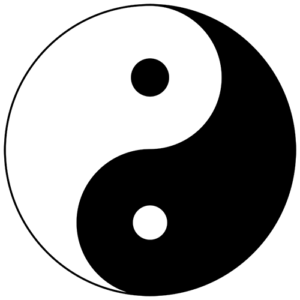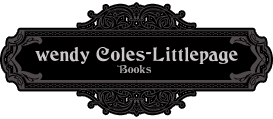The Yin and Yang of the Phantom of the Opera
When I first started writing my first book in my Phantom of the Opera series, Disfigured, I wanted to design the book to look as though it had been published in the 1880s. I’ve always appreciated the style and fonts, the little graphics and the ornate dropped caps found in old books. I’m no modernist, obviously! Give me serifs, lots of serifs!
So I wanted to find some symbol or graphic to close each chapter, and when I was looking through what was available in Word, I came across a yin-yang symbol. And it suddenly dawned on me: that would be perfect! What better symbol could I choose to represent Erik, the mysterious Phantom of the Opera?
I promptly went to Wikipedia, fount of all knowledge, to research the yin-yang symbol. And I learned an interesting thing: “In Taoist metaphysics, distinctions between good and bad, along with other dichotomous moral judgments, are perceptual, not real; so, the duality of yin and yang is an indivisible whole.” Which basically means that the duality of the Phantom – the good side, the bad side, the disfigured side, the normal side, the kind side, the cruel side – are all parts of the same man. He is these things, and they are a part of the whole that makes up Erik.
I liked this way of looking at him, and eventually I even incorporated the yin-yang symbol into the book itself. My heroine, Sylvie, finds a little mosaic box he has brought back from Persia at some time, and asks him about the strange symbol on the top. In their conversation, Erik assures her that he does not have a good side, so don’t go thinking anything like that about him. But of course he does have a good side, a balance to his nature, if you will. I believe that duality of his nature is one of the strongest reasons he fascinates us so.
When I was first writing my book, I had even tentatively selected a title that referred to both Light and Darkness, the two parts of yin-yang. Had to shelve that, though – it didn’t sound right.

Here is an example of a very basic yin-yang symbol. You can see those very significant dots within each swirl. Does that mean there is a little good in with the bad, and a little bad in with the good? I’m not sure to be honest. All I know is, I’m using the same symbol as I write Book Two in my series! Because as we all know, the Phantom is always going to be the Phantom. And we would not want him any other way!
